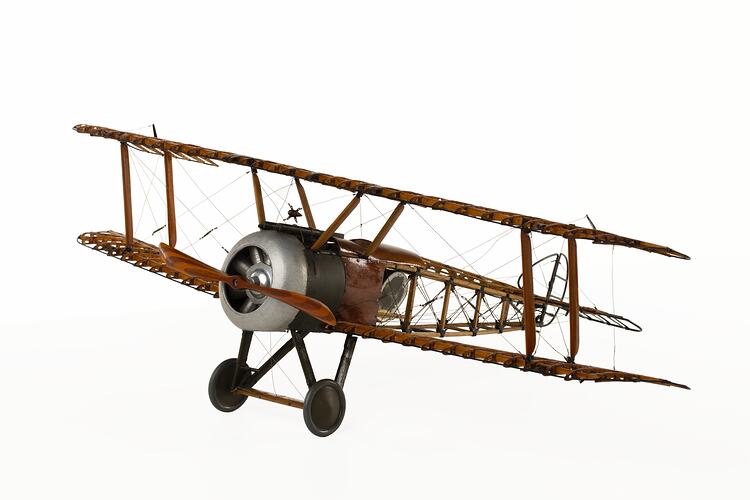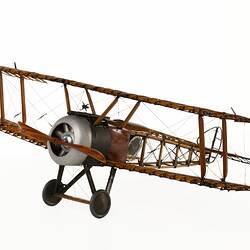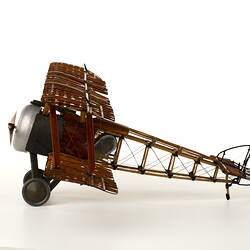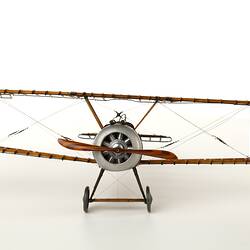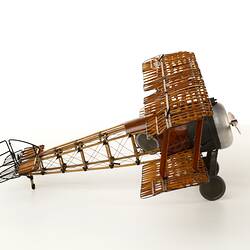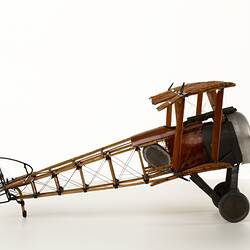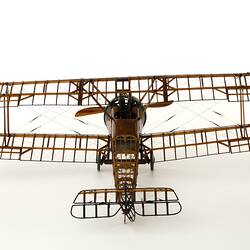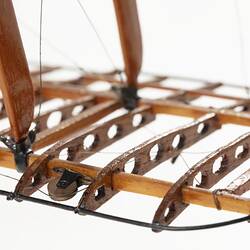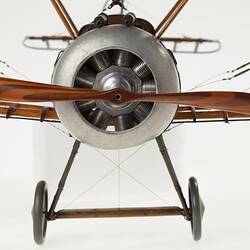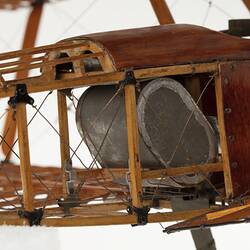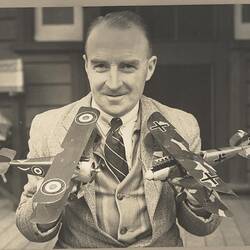Summary
1:12 scale model of a Sopwith F.1 Camel aeroplane, made by Harold Wood in 1918.
Highly detailed 1:12 scale model showing the wooden framework of the wings and fuselage of a Sopwith F.1 Camel, without fabric covering. It was made in France by Private Harold Peachey Wood, a mechanic and motor cyclist with No. 4 Squadron Australian Flying Corps in France in 1918. He made the model in his spare time from materials obtained from crashed aircraft. Harold Wood had been an early model aircraft maker from about 1908. He built many of the aircraft models in the collection of the Museum from the 1920s until the 1960s.
Aircraft History: The Sopwith Camel is perhaps the best-known fighter aircraft of the First World War but was considered obsolete in November 1918, even before the war ended, and was being replaced by the updated Sopwith Snipe. It was powered by a Le Rhone 110 horsepower or Clerget 130 horsepower engine. It entered service with the Royal Flying Corps in 1917 armed with twin .303 machine guns firing through the propeller arc under a humped fairing which is believed to be the origin of the Camel's name. It could also carry light bombs in a ground attack role.
No. 4 Squadron, Australian Flying Corps was equipped with Camels while serving in France in 1917-18. Australia's leading First World War flying ace Captain Arthur H. 'Harry' Cobby DSO, DFC flew the type almost exclusively to achieve 29 confirmed victories. The Squadron was re-equipped with Sopwith Snipes shortly before the war ended.
The Sopwith Aviation Company was founded by (Sir) T.O.M 'Tommy' Sopwith. Well-known Melbourne aviator Harry Hawker flew as a test pilot for the company.
Physical Description
Wood and metal model bi-plane with exposed wing and fuselage framework. The plane has a single propellor and two wheels at the front and a tail skid at the back.
More Information
-
Collection Names
-
Collecting Areas
-
Modelmaker
Mr Harold P. Wood, France, 1918
Made in France during WWI by Melbourne man Harold Wood. -
Brand Names
-
Classification
Air transport, Aircraft, Model propeller biplanes - military
-
Category
-
Discipline
-
Type of item
-
Overall Dimensions
711 mm (Width), 452 mm (Depth), 233 mm (Height)
-
Model Scale
1:12
-
Keywords
Aircraft, Fighters, Military Aircraft, Model Aeroplanes, Scale Models, Wars & Conflicts, World War I, 1914-1918, Models & Modelmaking
